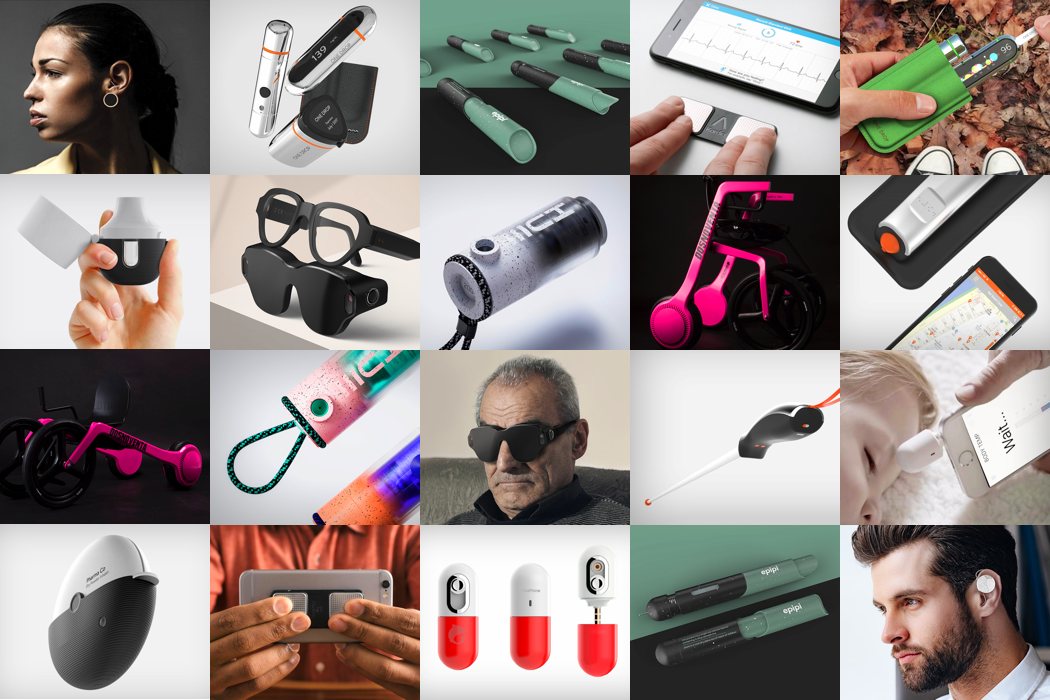
We’ve been very vocal about how much respect we have for designers who take up challenges in the medical domain. There’s always a lot at stake and with such a small margin for error, Design for Medicine or Design for Special Needs may just be one of the most challenging (and if done right, rewarding) design disciplines out there. Fast.Co lists Inclusive Design as a trend that will shape 2018, and our favorite posts from 2017 have only been a testament to the rise of that trend.
Whether it’s technological advancements to make better and more accessible medical products, or just redesigning medical and special-need products look more fashionable and inclusive, our top Medical Design posts for the year 2017 are pretty indicative of how big health care in 2018 is going to be!
This hospital bed can be folded and transformed into a wheelchair in a matter of minutes without disturbing the individual.
This wheelchair enhances mobility thanks to its scissor-inspired structure. It sports an innovative adjustable seat-height feature for better ergonomics. It also has two distinct riding positions: one that is ideal for cruising and maneuvering and the other for putting the user at eye level with standing individuals.
OH is at once a hearing aid and a fashion accessory. It allows the user to customize the product by changing the external ring’s range of textures and colors. It can also be used as an earring or attached hearing pin.
This smart thermometer is the embodiment of portability and compact design being just 5cm long and weighing a total of only 13g. The thermometer simply plugs into one’s smartphone audio jack.
Clevu is a wearable system that can not only work as traditional reading glasses but is capable of enhancing a variety of other sight situations. Enjoying the outdoors? There’s a setting for that. Watching TV? There’s a setting for that too.
This ergonomic smart cane comes as just a joystick handle with an automatic telescoping stick that shoots out when switched on. However, the walking stick doesn’t stop there. It connects to an app on the smartphone, actually guiding the user to destinations they set.
Simple and desirable, these black and white inhalers don’t just break the stigma of carrying an inhaler, they also look striking enough that you’d instantly spot it on the shelves (helping the brand reach customers).
This new EpiPen design, called Epipi, really makes things as simple as unscrew, press, and go! Just twist to arm it, hold against the skin, and press the button to release. A clear window into the medication reservoir will indicate that the contents have been emptied which enhances the confidence of the user that they performed the function correctly.
The Hue inhaler is completely 3D printed (note the transition from mottled color to transparent) and comes with a dazzling set of color combinations that are bound to break the monotony of medical product design. There’s even a woven paracord for easy access, or clipping/strapping to your bag/pants.
One Drop is a completely exhaustive diabetes fighting system that could easily be a part of any diabetic’s EDC kit.
The Kardia is a tiny ECG (or EKG) reader that works in conjunction with your iPhone to give you heart-rate readings. Simple in its design, with just two textured sensor-pads for your fingers, the device takes readings and its partner-app guides you through the process, showing you your current heart rate.
Meddsy isn’t as much a first aid kit as much as it’s an emergency aid kit. It contains dedicated units for everything from medical goods to any instruments one may need to treat themselves.
Don’t forget to check out YD’s best car designs from 2017.